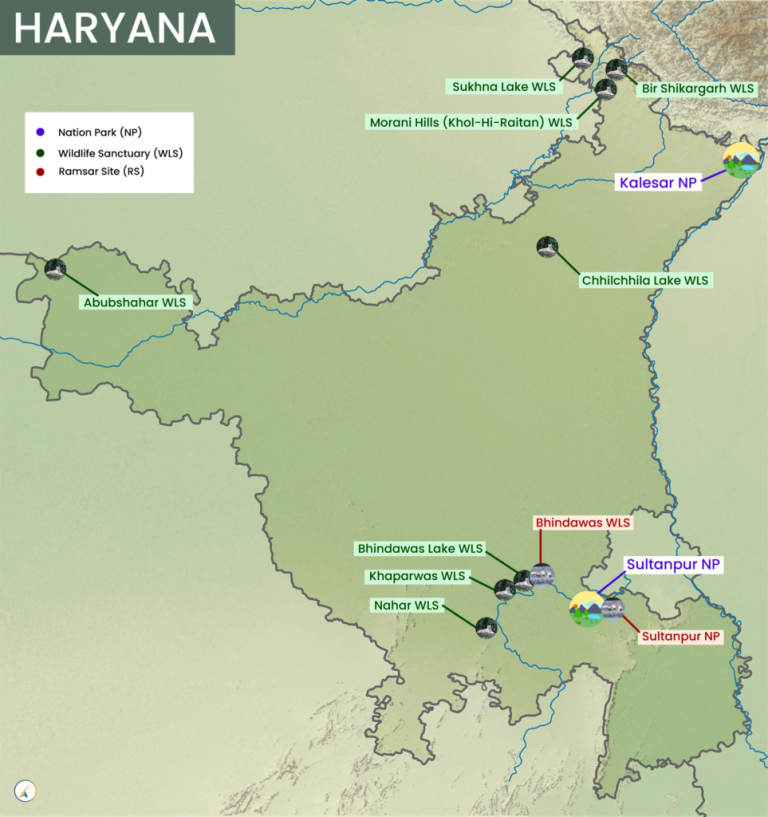Description

Disclaimer: Copyright infringement is not intended.
Context:
- SC stays construction of 4 dams inside Kalesar Wildlife Sanctuary.
Details of the rulings
- The Supreme Court issued a stay on the construction of four proposed dams within the Kalesar Wildlife Sanctuary in Haryana's Yamunanagar district.
- The court observed that the construction of dams would harm wildlife, local populations, and the ecosystem.
- It was noted that the proposed dams might not even serve their intended purpose.
- The ruling came after Advocate Gaurav Bansal filed a plea against the construction, citing negative impacts on flora and fauna.
- Bansal argued that the National Board for Wild Life approved the dams without considering a report from the Wildlife Institute of India (WII) which deemed the dams unnecessary.
Expert Opinions:
- The WII report highlighted that the proposed dams would significantly affect the biodiversity of the sanctuary.
- The principal chief conservator of forests and chief wildlife warden of Haryana also expressed concerns about the dams' impact on habitat use patterns of various species.

Abut Kalesar National Park:
- It is situated in the Yamunanagar District of Haryana.
- It occupies a location in the foothills of the Shiwalik ranges of the Himalayas.
- The park attained its status as a National Park on 8th December 2003.
Borders:
- To its east, the park is bordered by the River Yamuna.
- Northeast of the park lies the Rajaji National Park, situated in Uttrakhand.
- To the north, the park shares a border with Himachal Pradesh, where the Simbalbara National Park is nestled in the Shivalik Hills.
- The western boundary of the park is marked by the Morni Hills.
History:
- The park derives its name from the Kalesar Mahadev temple located within its premises.
- Historically, the park served as hunting grounds for rulers during the Mughal and British Raj periods.
- The park features colonial-era Dak bungalows, which serve as administrative architectural structures.
Natural vegetation:
- The park's vegetation predominantly consists of tall and dense sal trees, with other species like Semul, Bahera, Amaltas, Shisham, Khair, Sain, Chhal, and Jhingan also present.
Fauna:
- The fauna of the park includes several threatened species such as leopards, Ghoral, Barking deer, Sambar, Chital, Python, King Cobra, and Monitor lizard.

Source:
https://www.theweek.in/wire-updates/national/2024/04/24/lgd17-sc-kalesar-sanctuary.html#:~:text=SC%20stays%20construction%20of%204%20dams%20inside%20Kalesar%20Wildlife%20Sanctuary,-PTI%20Updated%3A%20April&text=New%20Delhi%2C%20Apr%2024%20(PTI,Sanctuary%20in%20Haryana's%20Yamunanagar%20district.
|
PRACTICE QUESTION
Q) Which of the following statements regarding Kalesar National Park is/are correct?
- The park is located in the foothills of the Aravali ranges.
- To its east, the park is bordered by the River Yamuna.
- The park's vegetation predominantly consists of tall and dense sal trees.
- Fauna in Kalesar National Park includes threatened species such as leopards, Ghoral, Barking deer, Sambar, Chital, Python, King Cobra, and Monitor lizard.
Select the correct answer using the codes below:
a) 1 and 2 only
b) 2 and 4 only
c) 1, 3, and 4 only
d) 2, 3, and 4 only
Correct Answer: d)
|













